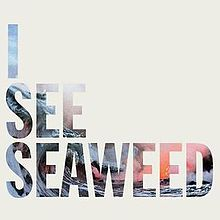This month I am studying “Photoshop for interior design”
Somebody needs to think about this stuff...
by justin
This month I am studying “Photoshop for interior design”
by justin

Trouble Will Find Me by The National
This week I am listening to “Trouble Will Find Me” by The National
by justin
Today I finished reading “Kiss That Frog!: 12 Great Ways to Turn Negatives into Positives in Your Life and Work” by Brian Tracy
by justin
Today I finished reading “Insanely Simple: The Obsession That Drives Apple’s Success” by Ken Segall
by justin
Today I finished reading “Usagi Yojimbo #28: Red Scorpion” by Stan Sakai
by justin
Today I read a paper titled “Haptics in computer music : a paradigm shift”
The abstract is:
With an historical point of view combined with a bibliographic overview, the article discusses the idea that haptic force feedback transducers correspond with a paradigm shift in our real-time tools for creating music
So doing, il shows that computer music may be regarded as a major field of research and application for haptics
by justin
Today I watched “World War Z”
by justin
Today I finished reading “Lucky Luke #31 – Tortillas pour les Dalton” by Rene & Goscinny
by justin
Today I finished reading “Lucky Luke #4 – Sous le ciel de l’Ouest” by Morris
by justin
Today I finished reading “Fundamentals of Construction and Simulation Game Design” by Ernest Adams
by justin
Today I read a paper titled “A Spectral Learning Approach to Range-Only SLAM”
The abstract is:
We present a novel spectral learning algorithm for simultaneous localization and mapping (SLAM) from range data with known correspondences
This algorithm is an instance of a general spectral system identification framework, from which it inherits several desirable properties, including statistical consistency and no local optima
Compared with popular batch optimization or multiple-hypothesis tracking (MHT) methods for range-only SLAM, our spectral approach offers guaranteed low computational requirements and good tracking performance
Compared with popular extended Kalman filter (EKF) or extended information filter (EIF) approaches, and many MHT ones, our approach does not need to linearize a transition or measurement model; such linearizations can cause severe errors in EKFs and EIFs, and to a lesser extent MHT, particularly for the highly non-Gaussian posteriors encountered in range-only SLAM
We provide a theoretical analysis of our method, including finite-sample error bounds
Finally, we demonstrate on a real-world robotic SLAM problem that our algorithm is not only theoretically justified, but works well in practice: in a comparison of multiple methods, the lowest errors come from a combination of our algorithm with batch optimization, but our method alone produces nearly as good a result at far lower computational cost
by justin
Today I read a paper titled “Random Topologies and the emergence of cooperation: the role of short-cuts”
The abstract is:
We study in detail the role of short-cuts in promoting the emergence of cooperation in a network of agents playing the Prisoner’s Dilemma Game (PDG)
We introduce a model whose topology interpolates between the one-dimensional euclidean lattice (a ring) and the complete graph by changing the value of one parameter (the probability p to add a link between two nodes not already connected in the euclidean configuration)
We show that there is a region of values of p in which cooperation is largely enhanced, whilst for smaller values of p only a few cooperators are present in the final state, and for p \rightarrow 1- cooperation is totally suppressed
We present analytical arguments that provide a very plausible interpretation of the simulation results, thus unveiling the mechanism by which short-cuts contribute to promote (or suppress) cooperation
by justin

Doris by Earl Sweatshirt
This week I am listening to “Doris” by Earl Sweatshirt
by justin
Today I finished reading “The Swift Programming Language” by Apple Inc.
by justin
Today I read a paper titled “Fuzzy overlapping communities in networks”
The abstract is:
Networks commonly exhibit a community structure, whereby groups of vertices are more densely connected to each other than to other vertices
Often these communities overlap, such that each vertex may occur in more than one community
However, two distinct types of overlapping are possible: crisp (where each vertex belongs fully to each community of which it is a member) and fuzzy (where each vertex belongs to each community to a different extent)
We investigate the effects of the fuzziness of community overlap
We find that it has a strong effect on the performance of community detection methods: some algorithms perform better with fuzzy overlapping while others favour crisp overlapping
We also evaluate the performance of some algorithms that recover the belonging coefficients when the overlap is fuzzy
Finally, we investigate whether real networks contain fuzzy or crisp overlapping
by justin
Today I finished reading “Lucky Luke #18 – A L’ombre Des Derricks” by Rene & Goscinny
by justin
Today I finished reading “The Power of Self-Confidence: Become Unstoppable, Irresistible, and Unafraid in Every Area of Your Life” by Brian Tracy
by justin
Today I read a paper titled “Optimal Probabilistic Ring Exploration by Asynchronous Oblivious Robots”
The abstract is:
We consider a team of $k$ identical, oblivious, asynchronous mobile robots that are able to sense i.e., view) their environment, yet are unable to communicate, and evolve on a constrained path
Previous results in this weak scenario show that initial symmetry yields high lower bounds when problems are to be solved by deterministic robots
In this paper, we initiate research on probabilistic bounds and solutions in this context, and focus on the exploration problem of anonymous unoriented rings of any size
It is known that $\Theta(\log n)$ robots are necessary and sufficient to solve the problem with $k$ deterministic robots, provided that $k$ and $n$ are coprime
By contrast, we show that four identical probabilistic robots are necessary and sufficient to solve the same problem, also removing the coprime constraint
Our positive results are constructive
by justin
Today I finished reading “Conan #13: Queen of the Black Coast” by Brian Wood
by justin
Today I finished reading “Made to Stick: Why Some Ideas Survive and Others Die” by Chip Heath
by justin
Today I finished reading “So Good They Can’t Ignore You: Why Skills Trump Passion in the Quest for Work You Love” by Cal Newport
by justin

I See Seaweed by The Drones
This week I am listening to “I See Seaweed” by The Drones
by justin
Today I finished reading “The Long Mars” by Terry Pratchett
by justin
Today I finished reading “Klondike” by Morris
by justin
Today I finished reading “The Honest Truth About Dishonesty: How We Lie to Everyone – Especially Ourselves” by Dan Ariely
by justin
This week I am listening to “Muchacho” by Phosphorescent
by justin
I don’t let my wife work with more non-profits than I have World of Warcraft accounts.
As I have reduced the number of World of Warcraft accounts to just five, there are some very disappointed people running non-profits.
by justin
Today I read a paper titled “Effective Mechanism for Social Recommendation of News”
The abstract is:
Recommendation systems represent an important tool for news distribution on the Internet
In this work we modify a recently proposed social recommendation model in order to deal with no explicit ratings of users on news
The model consists of a network of users which continually adapts in order to achieve an efficient news traffic
To optimize network’s topology we propose different stochastic algorithms that are scalable with respect to the network’s size
Agent-based simulations reveal the features and the performance of these algorithms
To overcome the resultant drawbacks of each method we introduce two improved algorithms and show that they can optimize network’s topology almost as fast and effectively as other not-scalable methods that make use of much more information
by justin
Today I read a paper titled “Circadian pattern and burstiness in mobile phone communication”
The abstract is:
The temporal communication patterns of human individuals are known to be inhomogeneous or bursty, which is reflected as the heavy tail behavior in the inter-event time distribution
As the cause of such bursty behavior two main mechanisms have been suggested: a) Inhomogeneities due to the circadian and weekly activity patterns and b) inhomogeneities rooted in human task execution behavior
Here we investigate the roles of these mechanisms by developing and then applying systematic de-seasoning methods to remove the circadian and weekly patterns from the time-series of mobile phone communication events of individuals
We find that the heavy tails in the inter-event time distributions remain robustly with respect to this procedure, which clearly indicates that the human task execution based mechanism is a possible cause for the remaining burstiness in temporal mobile phone communication patterns
by justin
Today I finished reading “The Upside of Irrationality: The Unexpected Benefits of Defying Logic at Work and at Home” by Dan Ariely
by justin
Today I read a paper titled “Simulation Techniques and Prosthetic Approach Towards Biologically Efficient Artificial Sense Organs- An Overview”
The abstract is:
An overview of the applications of control theory to prosthetic sense organs including the senses of vision, taste and odor is being presented in this paper
Simulation aspect nowadays has been the centre of research in the field of prosthesis
There have been various successful applications of prosthetic organs, in case of natural biological organs dis-functioning patients
Simulation aspects and control modeling are indispensible for knowing system performance, and to generate an original approach of artificial organs
This overview focuses mainly on control techniques, by far a theoretical overview and fusion of artificial sense organs trying to mimic the efficacies of biologically active sensory organs
Keywords: virtual reality, prosthetic vision, artificial
by justin
Today I finished reading “A Tour of C++” by Bjarne Stroustrup
by justin
Today I finished reading “Whatcha Gonna Do With That Duck?: And Other Provocations, 2006-2012” by Seth Godin
by justin
Today I read a paper titled “Unveiling the link between logical fallacies and web persuasion”
The abstract is:
In the last decade Human-Computer Interaction (HCI) has started to focus attention on forms of persuasive interaction where computer technologies have the goal of changing users behavior and attitudes according to a predefined direction
In this work, we hypothesize a strong connection between logical fallacies (forms of reasoning which are logically invalid but cognitively effective) and some common persuasion strategies adopted within web technologies
With the aim of empirically evaluating our hypothesis, we carried out a pilot study on a sample of 150 e-commerce websites
by justin
Today I read a paper titled “Efficient quantum circuits for binary elliptic curve arithmetic: reducing T-gate complexity”
The abstract is:
Elliptic curves over finite fields GF(2^n) play a prominent role in modern cryptography
Published quantum algorithms dealing with such curves build on a short Weierstrass form in combination with affine or projective coordinates
In this paper we show that changing the curve representation allows a substantial reduction in the number of T-gates needed to implement the curve arithmetic
As a tool, we present a quantum circuit for computing multiplicative inverses in GF(2^n) in depth O(n log n) using a polynomial basis representation, which may be of independent interest
by justin
Today I finished reading “Usagi Yojimbo #27: A Town Called Hell” by Stan Sakai
by justin
Today I finished reading “Lucky Luke – L’Integrale 20” by Morris
by justin
Today I finished reading “Born to Win: Find Your Success Code” by Zig Ziglar
by justin
This week I am listening to “Lousy With Sylvianbriar” by of Montreal
by justin
Today I finished reading “La Fiancee de Lucky Luke” by Morris
by justin
Today I read a paper titled “Visual definition of procedures for automatic virtual scene generation”
The abstract is:
With more and more digital media, especially in the field of virtual reality where detailed and convincing scenes are much required, procedural scene generation is a big helping tool for artists
A problem is that defining scene descriptions through these procedures usually requires a knowledge in formal language grammars, programming theory and manually editing textual files using a strict syntax, making it less intuitive to use
Luckily, graphical user interfaces has made a lot of tasks on computers easier to perform and out of the belief that creating computer programs can also be one of them, visual programming languages (VPLs) have emerged
The goal in VPLs is to shift more work from the programmer to the integrated development environment (IDE), making programming an user-friendlier task
In this thesis, an approach of using a VPL for defining procedures that automatically generate virtual scenes is presented
The methods required to build a VPL are presented, including a novel method of generating readable code in a structured programming language
Also, the methods for achieving basic principles of VPLs will be shown — suitable visual presentation of information and guiding the programmer in the right direction using constraints
On the other hand, procedural generation methods are presented in the context of visual programming — adapting the application programming interface (API) of these methods to better serve the user
The main focus will be on the methods for urban modeling, such as building, city layout and details generation with random number generation used to create non-deterministic scenes
by justin
Today I finished reading “Recent Advances in Knowledge-based Paradigms and Applications: Enhanced Applications Using Hybrid Artificial Intelligence Techniques” by Jeffrey W. Tweedale
by justin
Today I finished reading “Strip cocker” by Jean Roba
by justin
Today I read a paper titled “Live music programming in Haskell”
The abstract is:
We aim for composing algorithmic music in an interactive way with multiple participants
To this end we have developed an interpreter for a sub-language of the non-strict functional programming language Haskell that allows the modification of a program during its execution
Our system can be used both for musical live-coding and for demonstration and education of functional programming
by justin
Today I read a paper titled “An Unmanned Aerial Vehicle as Human-Assistant Robotics System”
The abstract is:
According to the American Heritage Dictionary [1],Robotics is the science or study of the technology associated with the design, fabrication, theory, and application of Robots
The term Hoverbot is also often used to refer to sophisticated mechanical devices that are remotely controlled by human beings even though these devices are not autonomous
This paper describes a remotely controlled hoverbot by installing a transmitter and receiver on both sides that is the control computer (PC) and the hoverbot respectively
Data is transmitted as signal or instruction via a infrastructure network which is converted into a command for the hoverbot that operates at a remote site
by justin
Today I finished reading “Death Note #9: Contact” by Tsugumi Ohba
by justin
This month I am studying “iOS app development with Swift”
Apple has invited me to sit in on their new iOS Swift training classes to see if I can offer any advice and also whether I would like to teach the class in the future.
I already teach a class in iOS app development with Objective-C so this should be a simple knowledge sidestep for me.
This is an in-person, hands-on four day workshop, six hours per day (actually eight hours, but there are two 30 minute breaks and an hour lunch scheduled for each day, so those don’t count.)
Update: I logged 28 hours of class time and extra study.
by justin
This week I am listening to “Pure Heroine” by New Zealand Lorde
by justin
Today I read a paper titled “Validation of Dunbar’s number in Twitter conversations”
The abstract is:
Modern society’s increasing dependency on online tools for both work and recreation opens up unique opportunities for the study of social interactions
A large survey of online exchanges or conversations on Twitter, collected across six months involving 1.7 million individuals is presented here
We test the theoretical cognitive limit on the number of stable social relationships known as Dunbar’s number
We find that users can entertain a maximum of 100-200 stable relationships in support for Dunbar’s prediction
The “economy of attention” is limited in the online world by cognitive and biological constraints as predicted by Dunbar’s theory
Inspired by this empirical evidence we propose a simple dynamical mechanism, based on finite priority queuing and time resources, that reproduces the observed social behavior
by justin
Today I read a paper titled “Fully automatic extraction of salient objects from videos in near real-time”
The abstract is:
Automatic video segmentation plays an important role in a wide range of computer vision and image processing applications
Recently, various methods have been proposed for this purpose
The problem is that most of these methods are far from real-time processing even for low-resolution videos due to the complex procedures
To this end, we propose a new and quite fast method for automatic video segmentation with the help of 1) efficient optimization of Markov random fields with polynomial time of number of pixels by introducing graph cuts, 2) automatic, computationally efficient but stable derivation of segmentation priors using visual saliency and sequential update mechanism, and 3) an implementation strategy in the principle of stream processing with graphics processor units (GPUs)
Test results indicates that our method extracts appropriate regions from videos as precisely as and much faster than previous semi-automatic methods even though any supervisions have not been incorporated